How To Care for Hellebores: Care Instructions for Lovely Blooms
Hellebores are not very demanding when it comes to caring for them
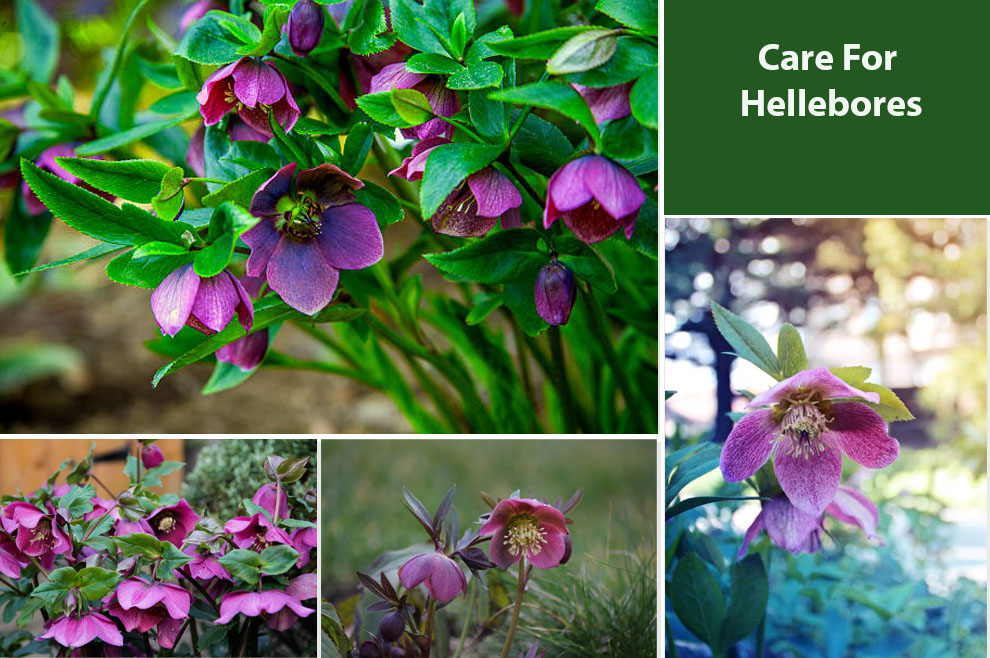
Hellebores are flowers that bloom in early spring, typically from February to May. They are also known as Lenten roses because they often bloom around the time of Lent.
Hellebores thrive in moisture-retentive soil that is rich in nutrients. Knowing how to care for Hellebores is crucial for them to thrive. You should water them regularly and keep them in a cool place with partial shade. When the plants start to bloom, fertilize them with a high-phosphorus fertilizer or organic compost.
The upkeep of hellebore plants is not challenging. They can thrive in a variety of environments and are comparatively drought-tolerant. Hellebores prefer well-drained soil and full sun over partial shade.
They are typically low-maintenance plants and don’t need a lot of fertilizer or trimming. If you are planning to grow Hellebores in your garden, continue reading this article for detailed Hellebore care instructions on growing healthy Hellebore blooms.
Care Overview for Hellebore Plants
| Hardiness Zone | 4 to 9 |
| Soil | Fertile, well-drained, and loamy soil |
| Is mulching required? | Regular mulching required |
| Water | An inch of water per week during their growing phase. |
| Fertilizer | Slow-release balanced fertilizer blend like 10-10-10 or compost. |
| Sun | Full exposure to sunlight or partial shade. |
| Pruning | Not Required |
| Dividing | Not necessary to divide hellebores but can be done during September or October if you wish to. |
How to Care for Lenten Roses (Hellebores)?
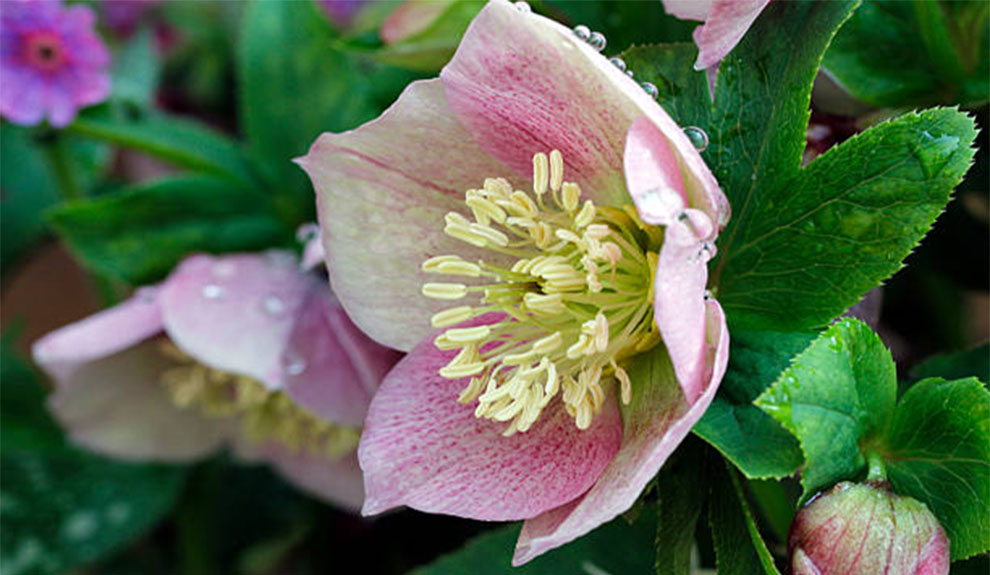
Hellebores varieties are fairly low-maintenance plants that do not require a lot of extra care aside from the minimum requirements.
However, to provide hellebores with a healthy growth environment for Lenten rose or hellebores you need to know the specific requirements of the plant like what would be the best time for sowing the seeds, what fertilizers to use, how much water the plant requires, and so on.
A. When to plant hellebores: Hellebore plants can be planted at any time of the year except for dry summers. These plants can survive tough weather conditions and have adapted to almost all kinds of seasons.
Keeping in mind how to care for Hellebores, you must ensure the best time to plant Hellebores. It would be during the spring and autumn months to ensure that the Hellebore seeds germinate properly by the beginning of next spring and produce beautiful Lenten Rose flowers.
B. Soil type and pH: Hellebores prefer a clayey, loamy, well-drained type of soil that contains sufficient nutrients in the form of organic matter. The pH scale of the soil should range from 6.5 to 7.5 which means that the soil should be neutral or slightly alkaline in nature.
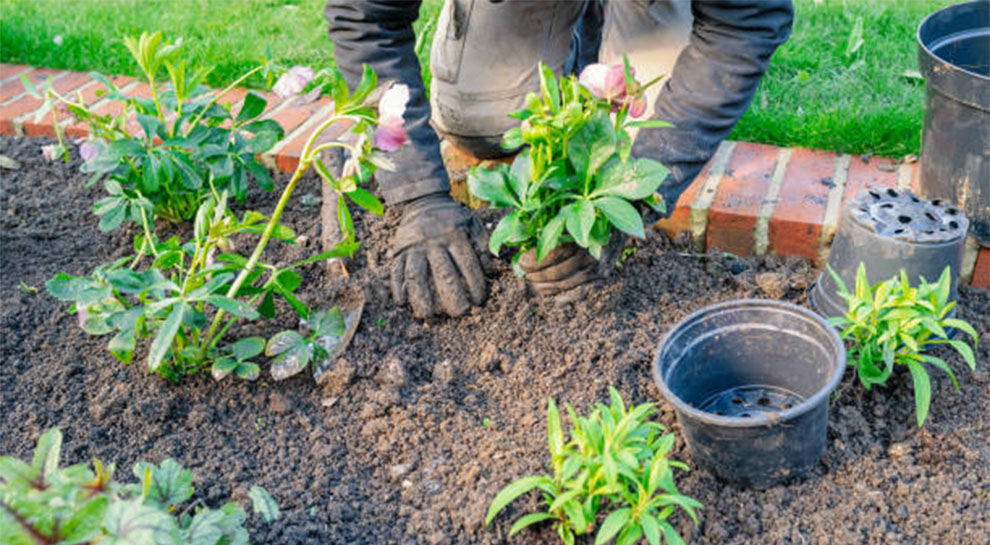
Hellebores can grow in all kinds of soil even if the quality of the soil is poor but has enough nutrients. One should always be cautious of what type of soil Hellebores prefer if they are learning how to care for Lenten Roses.
C. Fertilizers: Hellebores are deep-rooted plants, and they prefer slow-release fertilizers that contain all three major elements plants need for nutrition: Phosphorus, Nitrogen, and Potassium.
These fertilizers are readily available in the market and are known as ‘complete’ fertilizers. It is best not to use chemical fertilizers when the plant is yet to germinate. During the early stages, using natural compost of leaves or old manure to fertilize the soil is best.
D. Watering needs: In order to know how to look after Hellebores, one must know what the watering needs of the plants are. Prior to germinating, it is advised to supply the hellebore plants with an inch or two of water to get them established.
Try to protect the plants from heavy rainfalls and do not over-water them. After the seeds have germinated and the plant has started to steadily grow and bloom, reduce watering the plant to once a week and only increase the amount to thrice a week during the hot and dry months.
E. Sunlight: Hellebores are versatile when it comes to tolerating full sunlight and even full shade. Ideally, try to plant the hellebores in areas that receive a moderate amount of sunlight throughout the day or in partial shade.
F. Pruning: The perfect time to prune a hellebore plant is during late winter or early spring that is, just when the new growth starts to appear. It is best to remove old foliage so that diseases are not carried into the new growth.
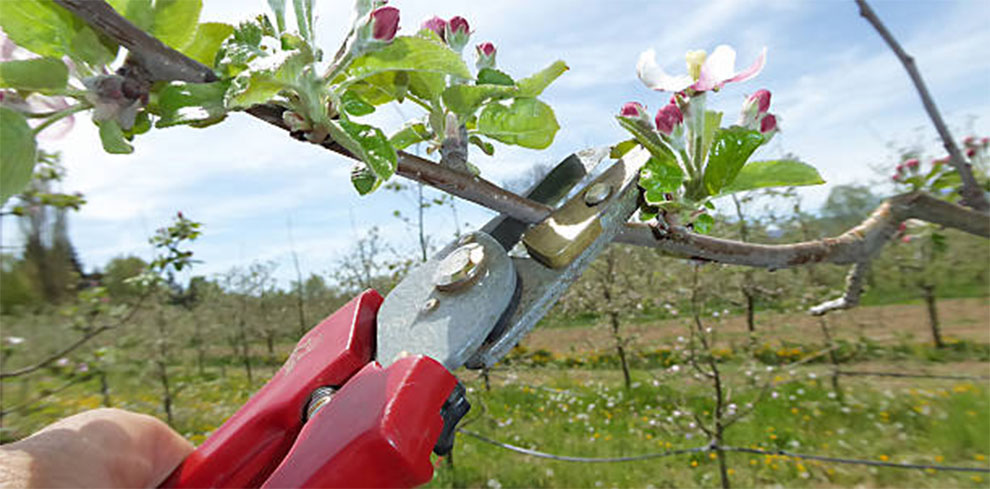
Removal of old stems and dead leaves is also essential if you wish to take care of the hellebore plant.
G. Cutting the flowers: An important aspect of knowing how to care for Lenten Rose plants or Hellebores is knowing how and when to cut their flowers. When it comes to cutting the flowers off a Hellebore plant, a useful trick that gardeners have used over the years is to use a sharp knife to chop the hellebore stems instead of using scissors.
Knifes are better because they give a clean cut in one go. You can also make an inch-long split in the middle of a stem.
This will help the hellebore plant remain healthy even after the flowers have been chopped off. This technique will also aid in keeping the flowers of the Hellebore plant alive and fresh for a longer period of time.
H. Dividing the plant: Although it is not necessary, dividing hellebore plants can improve older plants’ flowering. Hellebores can be easily propagated by division as well as by repotting the many young plants that the plant quickly produces each year.
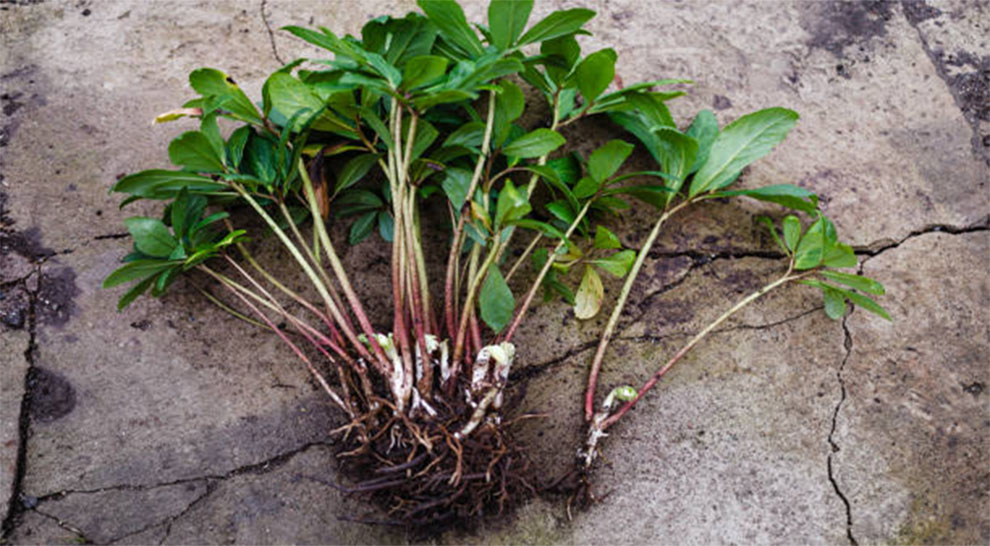
Most hellebores can be easily propagated by digging up the clumps and splitting them. Though you may also do it in spring, immediately following flowering, early autumn is the best time to accomplish this.
The best way to divide a plant is to dig it up completely, wash the crown to remove any remaining dirt so you can see what you’re doing, and then cut between the growth buds with a sharp knife. This is how to take care of Hellebores when it comes to dividing the plant.
I. Diseases & pests to watch out for: Hellebores may be susceptible to infection by the Helleborus net necrosis virus (HeNNV), a terrifying viral pathogen that causes the black death and was just recently identified.
If you notice black blotches and streaks on mature plants’ leaves or flower bracts, you should be quite frightened. The fungus ‘Microsphaeropsis Hellebori’ is the source of the widespread disease known as hellebore leaf spot, which affects a variety of hellebore species.
The period from late winter to summer when new plant development takes place is when you are most likely to notice diseases. Some of the other most common diseases that affect hellebore plants are Black Death, Black Spot, and Downy mildew and some of the pests that infiltrate the Hellebores are Hellebore aphids, Leaf Miners, Slugs and snails, and Wine Weevils.
The above-described Hellebore care instructions are important and must be followed if you wish to cultivate healthy, blooming hellebores in your garden.
What To Do With Hellebores When They Finish Flowering?
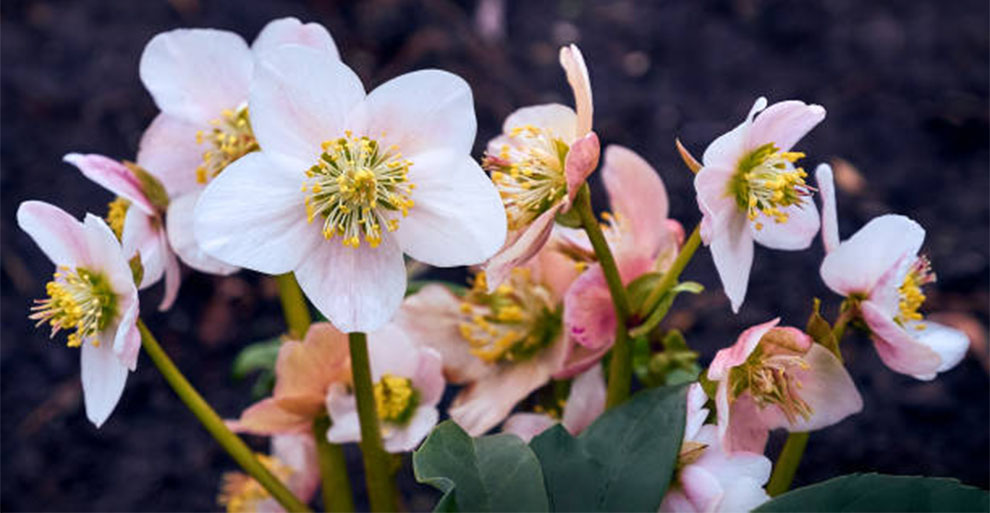
After the hellebore plant finishes flowering, it is advised that you prune the plants to remove dead leaves and cut off the previous year’s foliage. This prevents the hellebore plants from contracting the Hellebore leaf spot disease and carrying it over to the next flowering season and infecting the flowers.
Pruning the plant for removal of dead leaves after the flowering season not only keeps the Hellebore plants healthy but also enhances the amount as well as the quality of flowers produced on the plant.
Also keep in mind, how to care for Hellebores with regular mulching and adding fertilizers. They are also important at the end of the blooming season to maintain the quality of soil thereby enhancing the growth of flowers in the following season.
FAQs
Q. How to Grow Hellebores from seeds?
Ans: In order to grow Hellebores from seeds, it is preferable to plant them in a pot and keep them in full sun or partial shade. Later, when the plant starts to germinate, you can take them out of the pot carefully and plant them under shrubs in fertile, well-drained soil.
Q. Do Lenten Roses do well in pots?
Ans: Lenten roses or hellebores are well suited for pots and containers. One can easily plant hellebores in pots and place the pots under full or partial sunlight to watch the plant germinate.
In brief, Lenten Roses are indeed well suited to become potted plants and can have healthy growth even in pots and containers.
Q. Are Hellebores toxic?
Ans: Besides knowing how to take care of Hellebores, you should also know how to care for yourself because Hellebores are highly toxic and poisonous in nature. They should be handled extremely carefully.
They can cause skin inflammation, rashes, and itching if they come in contact with the skin. One should be cautious and wear gloves while touching hellebores because their poisonous nature will immediately induce nausea and vomiting.
You should also never try to smell a Hellebore, as the odor it produces is also toxic and causes sneezing.
Q. Should Hellebores be cut back for winter?
Ans: As stated above, hellebores are pretty undemanding and low-maintenance plants. Therefore, following Hellebore care instructions, there is no inherent need to cut back hellebores during winter but it is definitely always advisable to remove old foliage at the end of winter or at the beginning of spring for all plants.
Q. What to plant with Hellebores?
Ans: You can choose to plant Hellebores with shrubs that are around 4 feet tall. Some of the plants that grow well with Hellebores are Hostas, Hardy Ferns, Columbines, Coral bells, and shade-preferring grass-like sedges.
To Sum Up…
This article has been aimed at providing you with a clear idea of how to care for Hellebores. That is, what kind of soil they prefer, what type of fertilizer they should use, whether you should trim and prune the plant seasonally, and so on.
It is also imperative to note that hellebores are toxic in nature and therefore, caution should be exercised while dealing with these plants.
All the information that one might require to cultivate a healthy hellebore plant in their garden has been provided in this article in a comprehensive manner. With vibrant ornamental flowers that bloom throughout the winter to the spring season, it’s time to bring your garden full circle with hellebore plants now that you know how to look after Hellebores properly.
